Table of contents
What is Tarot?
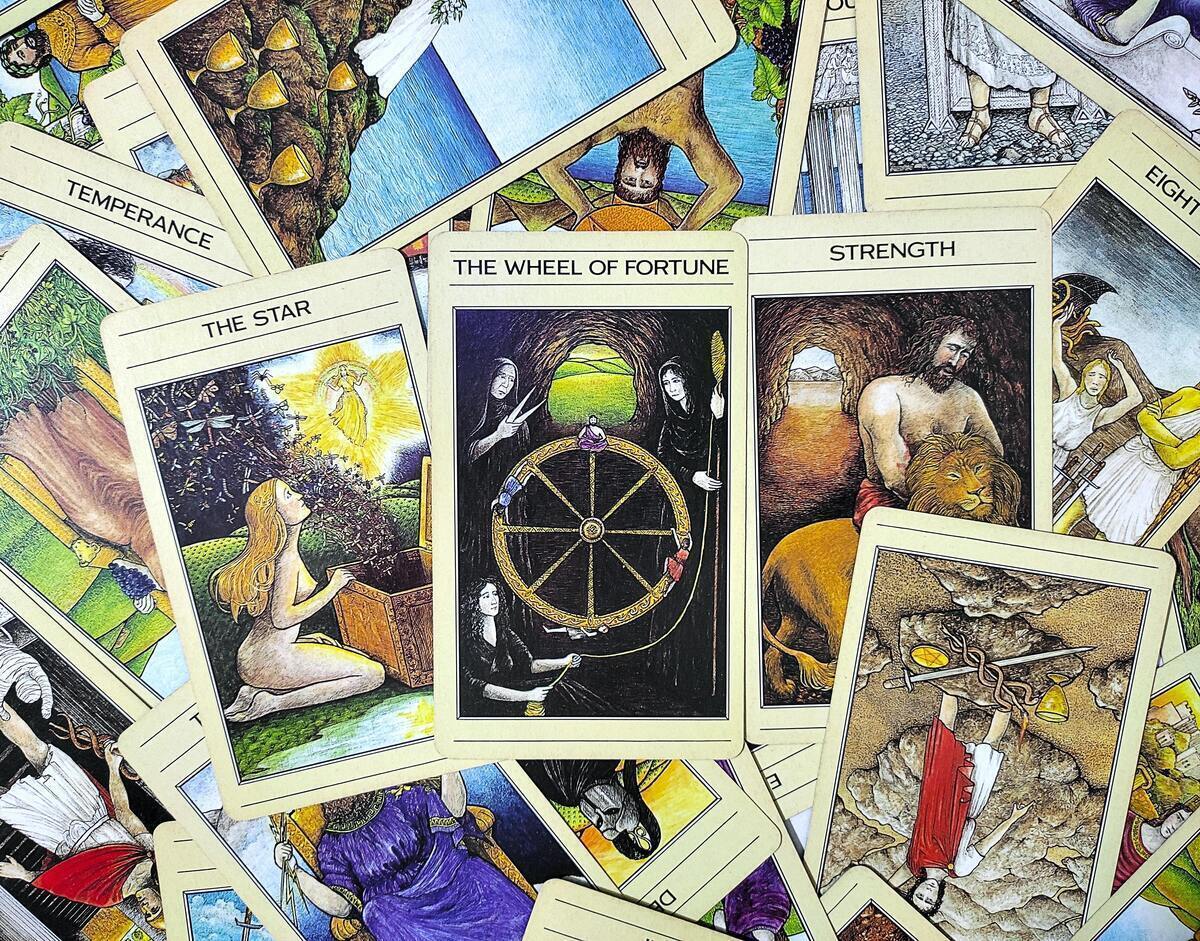
Tarot is a divinatory oracle that uses 78 cards, divided between major arcana (the first 22 and major arcana (the others). Its use is widespread, and may focus on self-knowledge or divinatory answer about the questions asked to the cards. Being one of the best known oracles, the Tarot has thousands of variations.
The study of Tarot requires time, because each of the cards has many details and different interpretations, depending on the method of drawing and even its position. To understand how to unravel the mysteries present in each card and know techniques of drawing, read here!
History and fundamentals of Tarot
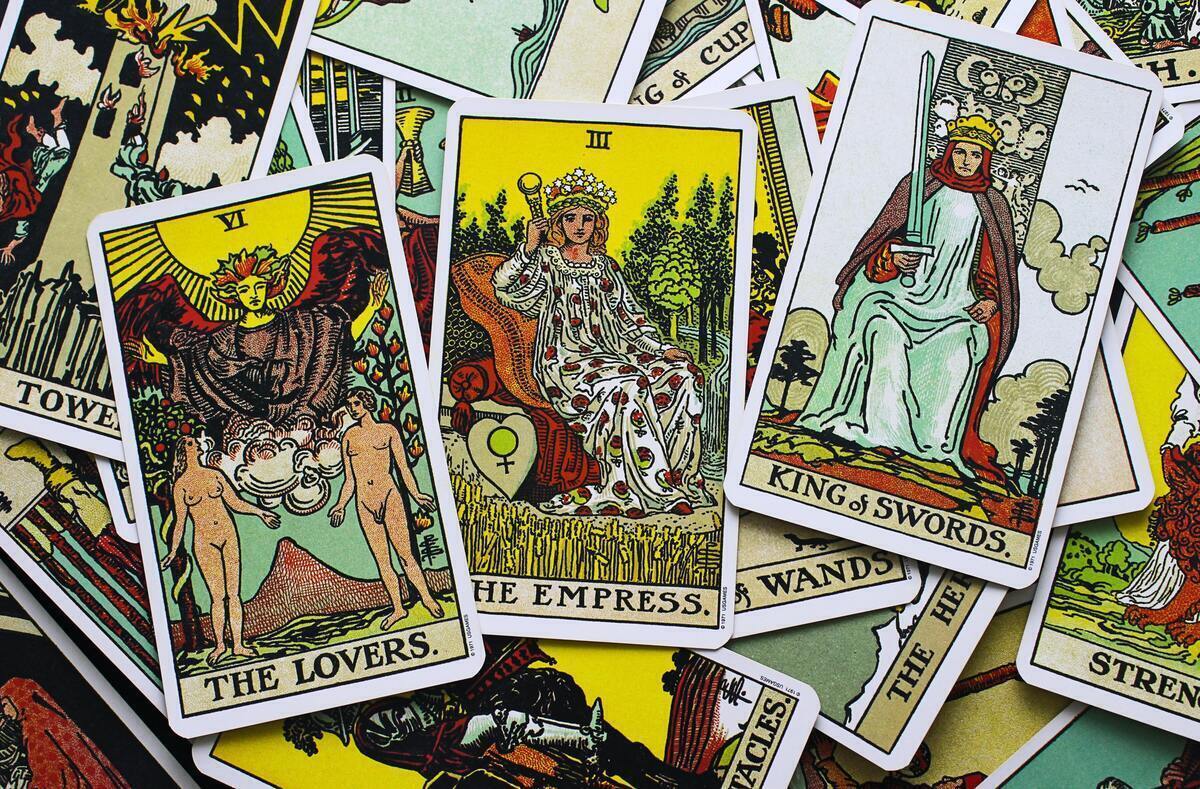
Since the most ancient civilizations, predicting the future is something that instigates mankind. For this purpose different oracles were created, which have undergone improvement and modification over time. With Tarot, it was no different. The reading of the cards and their interpretations have been evolving since its creation.
Origin and history
The origin of Tarot has no dated record, but in the fourteenth century cards with the suits of hearts, clubs or sticks, swords and diamonds or coins, were successful in the French and Italian courts. Over time began to emerge also other suits, created by famous artists who met orders from families of nobility.
In that period, wealthy families ordered the so-called "cards of triumph", representing in an artistic way the members of the family group. At that time, the deck had no divinatory meaning, but between the end of the 16th century and the beginning of the 17th century this possibility began to emerge.
Prior to this, there is only record of the use of playing cards for divinatory purposes referring to the Mamluk deck. The card game also known as "Mamluk" was brought from Turkey to Western Europe and its name is a reference to the Mamluk sultanate of Cairo, Egypt.
The "Mamluk" deck featured the suits of kings and deputies who would be the king's staff, something that can be compared to the knight in today's deck. Mamluk also featured the aforementioned suits (cup/cups, staff/sticks, coins/gold, and spades).
Objectives
From the moment that the Tarot started to be used for divinatory purposes, other esoteric possibilities were attributed to the purpose of the game, which in the previous forms had as its focus purely entertainment. In the eighteenth century, it was already an existing practice the attribution of mystical meanings and interpretations to the cards.
Nowadays, the use of Tarot can be made both as a tool within a journey of esoteric studies, and as an instrument that aims at a form of self-knowledge. One of the most famous decks, that of Rider Waite, was created with a book that attributed esoteric meanings to the symbols of the cards.
Used until today, the Rider Waite deck makes use of colors and elements present in the images to transmit messages that are present in the collective unconscious. The use of the instrument can be interpretative, making analysis of the issue experienced with the answers presented by the symbols, moreover, generating an internal reflection.
Benefits
The reading of cards like the Tarot can bring numerous benefits. Each blade has multiple symbology, allowing to be interpreted in an appropriate way for each situation. All the symbolism of tarot is an invitation to contact with oneself, because the cards reflect aspects present in individuals that are often denied by them.
The Tarot teaches about the need to see one's own shadows and points of weakness, as well as reflecting the positive aspects, whether behavioral or intellectual, that may not have been seen until now. Every journey proposed by the Tarot provides an internal experience of reflection.
In addition to questions concerning the prediction of future possibilities, the reading should also delve into the deep meanings of the cards, which can be reflected in the people themselves. However, their use for divinatory purposes can also soothe anguish and reduce anxieties regarding issues that are not controllable.
Tarot Drawing Methods
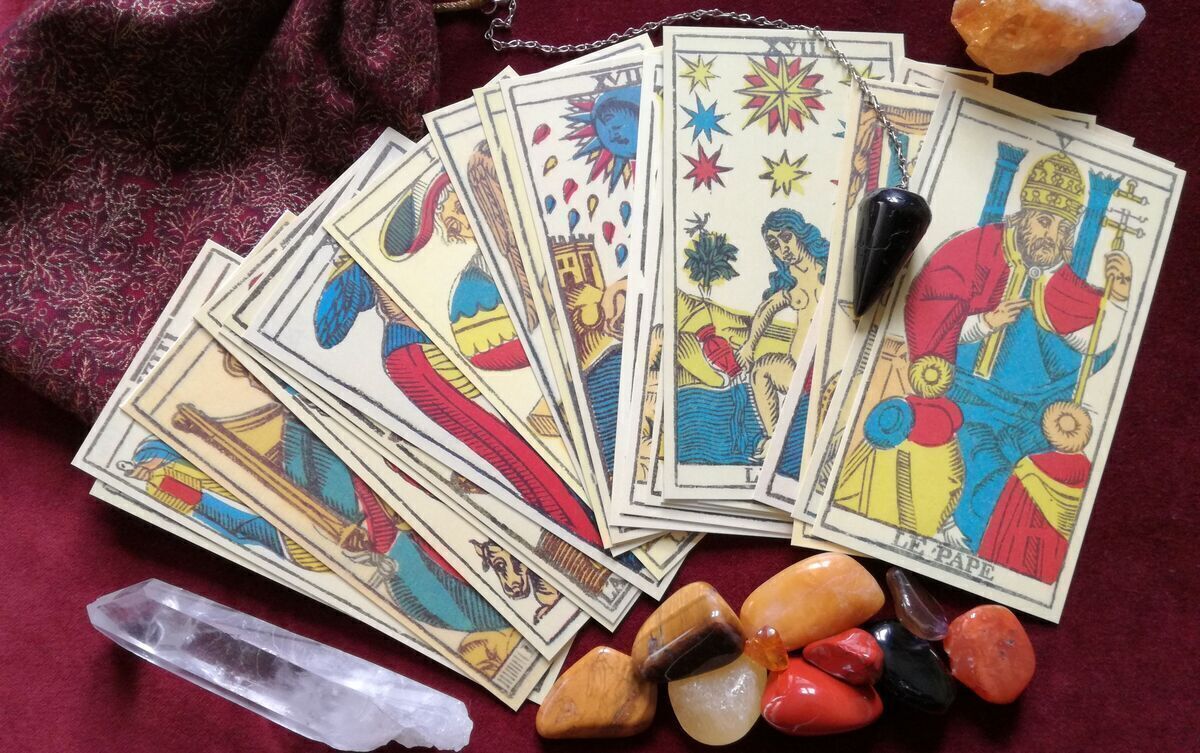
Just as there are different Tarot decks, there are different types of drawing. This expression refers to the way the deck is consulted, either by the arrangement of the cards or the order in which they are interpreted. The method can also interfere with the amount of cards played. Learn about the methods of drawing below:
One-card draw
Starting with one card, the single card method is self-explanatory. The technique consists of interpreting only one card per question or advice, and is widely used by beginners in the Tarot, because in this way only one card will have its meaning revealed. The simplest method of all does not require the interpretation of relationships between cards
However, in the drawing of a card is the deep knowledge of one of them. To do this it is necessary to choose a card from the complete deck and ask an objective question, as clear as possible. From the result is made the interpretation, which takes place in a simple way, taking into account the meaning of the arcane in question.
When the question is related to a challenge, karma or guidance, the result arcane will be the expression of what is not being done by the consulter. Following this logic, the advice represents the characteristics and postures that should be assumed by him according to the Tarot advice.
Linear three-card draw
One of the most common drawing techniques is the linear three-card draw. This is because in this draw, only three arcana are used, as the name suggests. The three cards can reflect either the past, present, and future, or the situation, problem, and advice. In this method, the cards are read from left to right.
Past (reflects a situation that has already occurred) - Present (shows something that is not being observed at the present time - Future (is advice on how to deal with the present in a way that achieves goals in the future).
Situation (represents what is desired or the situation one is in) - Problem (is the obstacle to be faced on the journey) - Advice (what to do to overcome the obstacle and get out of the situation or achieve what is desired.
There are also variations of this method, such as the possibility of analyzing a relationship. In this case, card 1 would represent the person, card 2 would be the one you want, and card 3 the outcome or prediction for the relationship.
Variant edition of three cards
The three-card variant drawing method is similar to the linear three-card draw, but does not follow a chronological line. This technique is recommended for situations in which there is some doubt between two options. When put into practice, the three-card variant drawing presents itself in the form of a triangle, which should be read from the left base.
Some reading options using the variant run of three cards:
Left base card (represents the negative aspect) - Right base card (shows the positive aspect) - Top card (advice for choice).
Left Base Letter (talks about the aspects of the first option in the question) - Right Base Letter (discusses details of the second option mentioned) - Top Letter (explains how to choose between the two options).
Three-card crossover draw
In the three-card cross drawing, a process is done to interpret situations that are complex and challenging. For this, three cards are placed so that one of them is on top of the other, but the third is far away. The reading starts from the card that is below, followed by the one above it and finally the outer one.
Some options for readings using the three-card cross-draw method:
First card (this is the card lying under the second and represents the situation posed in the question) - Second card (this is lying on top of the first and shows the hindrance or obstacle to the situation) - Third card (this is the card lying next to the others. It reflects the advice for the situation.
First card (below the second; in this case shows the opportunity present in the question) - Second card (is on top of the first, shows the challenge) - Third card (is distant from the first two and shows the possible outcome of the situation).
Cross print of five cards
The five-card cross drawing is also called diamond drawing. This method of Tarot is commonly used to understand in a deeper way an issue that is being experienced, showing aspects that are not seen until the moment and offering a possible solution. In the drawing all arcana are used.
After shuffling, the cards are arranged in the form of a cross, with the central card being the first to be analyzed, following to the left, next to it, in sequence the third card is drawn, which is positioned at the right end of the cross, finally the lower and upper end are read.
Reading method using the five-card cross method:
First card (situation you wish to understand) - Second card (influence you cannot see) - Third card (influence you have already seen) - Fourth card (signals what must be done to solve the problem) - Fifth card (solution to the question).
Péladan print run of five cards
Created by the Frenchman Josephin Peladan, also founder of the Rose-Cross esoteric order, the Tarot drawing method that bears the name of its creator focuses on objective, temporal questions. The cards are arranged in the form of a cross and the present of the situation, the possible future and the vision of the person to whom the drawing is directed are explored.
Arrangement of the cards in the five-card Peladan drawing method:
First card - is located on the left side edge, shows the positive aspects of the situation.
Second card - is opposite the first, on the right side edge of the cross and shows what is not favoring in the situation.
Third card - is at the top end of the cross and shows how the development of the issue will be.
Fourth card - is the card at the bottom of the cross and shows the result. However, it is necessary to analyze it carefully, taking into account the previous cards when making the interpretation of the answer.
Fifth letter - is in the center of the cross, expresses how the person is faced with the issue.
To learn more about the Peladan method of tarot drawing, see
What is the Peladan Method? In tarot, the drawing, interpretation and more!
Temple of Aphrodite print run
Aphrodite is the goddess of love and beauty, so nothing could be more fitting than a Tarot run inspired by her name to investigate the issues that plague hearts. Using this method, it is possible to understand issues about the mind, the heart and the carnal aspects of a relationship.
For a drawing using the technique of Aphrodite's temple seven cards will be used, three of them arranged on the left side, representing the partner and other three on the right side, showing aspects of the consulter. Besides them, the seventh card is in the middle, presenting the near future of the couple.
Let's go to the cards:
First card - in the upper left area is the card that represents the mental field of the partner.
Second card - below the first, expresses the emotional field of the partner concerned.
Third card - below the second, represents the physical attraction that the partner feels.
Fourth card - in the top right, shows how the emotional field of the person who consults with the Tarot.
Fifth card - below the fourth, deals with the emotional aspects of the consulter.
Sixth card - below the fifth, shows the physical attraction of the person to his partner.
Seventh card - centered in the middle of the two rows, presents a near future in the relationship between the two.
Celtic cross print of ten cards
The method of drawing cards called Celtic cross has unknown origin and is very suitable for those who want to use the Tarot to scrutinize a question. In this case are studied all the possibilities of pros and cons, and its original form of drawing uses ten cards, considering the major and minor arcana.
Its form of arrangement on the table is reminiscent of a Celtic cross, and the arcane 1, 2, 3, 5 and 7 represent the questions which the consulter already knows, while 4, 6, 8, 9 and 10 refer to the questions which until then are unknown. In particular 4, 6 and 10 show the possible future developments and the prediction of the question.
That being the case, the reading order would be:
Letter 1 - shows how the situation arose.
Letter 2 - addresses the questioning one has about the situation, the why of the question.
Card 3 - represents the conscious, that is, what the consulent knows about the situation.
Card 4 - unconscious, what is not yet known.
Card 5 - is the representation of the recent past (up to 6 months).
Card 6 - shows the near future (up to 6 months).
Card 7 - represents the mental state of the consulent in the face of the situation.
Card 8 - the arcane signals how it will unfold in the coming months.
Card 9 - shows the obstacle and contains a warning.
Card 10 - the last card shows how the situation in question will develop in the long term (beyond 6 months).
To better understand the Celtic Cross drawing, and learn exactly how to do it, see What is Celtic Cross for Tarot? The reading method, number 10 and more!
Major Arcana of the Tarot
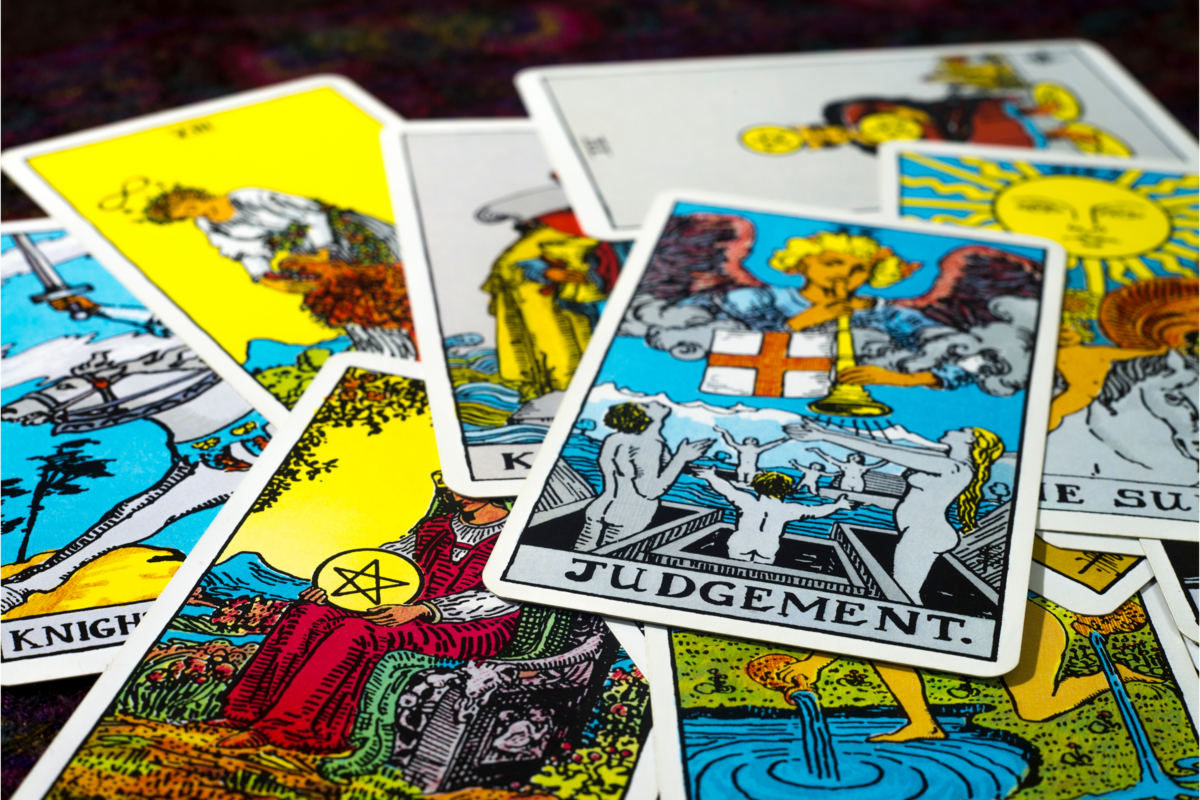
In Tarot, the first 22 cards receive the name of major arcana. They are the best known figures and have deep meanings, because they express issues that relate to human identity. To better decipher the messages of the major arcana, read below:
What are the major arcana?
The major arcana are the cards 1 to 21, plus the card without number, an arcane that receives the name of The Fool and symbolizes the person who is making a journey into the unknown. It can be interpreted, inclusive, that this card is present in all 21 prior to it.
Major arcana are used to understand in a deeper way the major issues related to one's life, as they focus on events or transformations that will have an impact in the medium and long term, unlike the minor arcana, which focus on issues of daily life.
The narrative told through the major arcana can refer both to situations faced, as emotional aspects and necessary postures, depending on the question and the other cards present in the issue. To understand them, it is necessary to pay attention to all details present on the slide, from the colors to the imagery elements.
What do the major arcana mean?
The major arcana have distinct meanings. Each card shows a complete narrative, from the most explicit symbolic elements, to the complex between the lines, with symbolisms that represent fears and longings, weaknesses and strengths present in the human soul.
Due to the complexity, the major arcana of the Tarot require a detailed study and enough practical exercises to be able to understand the different applications of the advice present on the cards. The meanings may seem, for a layman something ambiguous, but with the appropriate knowledge, it is possible to decipher each of the cards.
Major Arcana are also used to decipher the general plan of a situation or the life of a person. This is because the complexity present in them can be reflected in different situations, while the advice carried by them are not at all obvious, and invite the consulter to the beginning of a journey of self-knowledge.
Card 0, The Madman
The Fool is the main character in the story presented by the Tarot. This is because it is through him that the journey is lived, going through all the houses to reach the final goal. The card represents the desire to dive into new situations and impulsiveness, almost naive. Represented by the image of a traveler, the arcane encourages courage.
However, going on an adventure also has its consequences. For this reason, the card may express, besides the courage for new beginnings, the inconsequence that may be present and needs attention. If the card is inverted, the advice is: "beware of taking risks into the unknown without preparation".
The Fool is a card that, in its regular sense, also represents the lightness of life, the possibility to enjoy existence without worrying about insecurities or blockages. Already inverted, it can express exactly the behavior that is not present, but that should be experienced.
Letter 1, The Magician
The apprentice of magic, known as The Magician, is the card number 1 that begins the Tarot journey. It represents the channeling of the creative energy of the universe, with the aim of bringing the project to fruition. It is also directly related to the power of persuasion, since it has the ability to create illusions.
Depending on which area in question is being analyzed, its meaning can also be different. In love, the card represents the ephemeral will, expectation and anxiety. In the mental field, the card represents creativity and the beginning of a new project, shows that the person already has what is needed for the realization.
When inverted, it shows exactly that the talents necessary for creation already exist, but are not being explored properly. For this, in the inverted position, The Magician advises to better elaborate a plan and give more attention to your own abilities.
Card 2, The Priestess or The Papaless
The second card is called The Priestess. This arcane, commonly represented by a woman in ceremonial robes, represents the holding of ancestral knowledge and intuitive power with a passive posture. Its advice encourages directing one's attention to one's own intuition.
In the field of love, the Priestess expresses inhibition, suppression of desire, modesty, fidelity and dedication. Regarding mental attributes, it can symbolize excessive reflection, good sense, deep analysis and caution. In material matters, the Priestess represents a passive negotiation, with possible barter and absence of ability.
When present in an inverted form, card 2 indicates excessive withdrawal, lack of contact with one's intuition and silence. In this case, The Priestess may be offering an opportunity to reconnect with inner wisdom.
Letter 3, The Empress
The arcane The Empress represents, in the Tarot, the abilities most related to the feminine figure, which are creativity, beauty and abundance. The Empress has all the tools to achieve success and feels comfortable with it, being also a protector and creator.
In love the card represents directed will, security, certainty of your wishes, emotional balance and charm. For the material area, the arcane is also auspicious because it indicates success, prosperity, fertility and can even show a possible promotion. In the mental field it reflects creative intelligence, perspicacity and power of active reflection.
When the Tarot card 3 is inverted, however, its prosperous meaning changes. This happens because, as a rule, the inversion of the cards indicates the absence of the abilities expressed in it. Being the representation of the power of creation, the card gains the symbolism of creative block when it appears inverted.
Letter 4, The Emperor
Power, authoritarianism and imposition are just some definitions that can show some of the energy present in the arcane 4, The Emperor. His authority is unquestionable, as well as his desire to achieve goals, but this journey can become abusive, when he starts to trample the wishes and needs of others for the satisfaction of the ego.
In love The Emperor represents self-confidence, possessiveness and arrogance. In the same sphere it can also represent a masculine figure that refers to the father figure. As for the material aspect of the arcane, it presents power, material achievement, status and a possible fusion. In the mental field, it is a sign of conviction and stagnation.
Inverted, The Emperor shows the excess of dominating desire, lack of discipline and inflexibility. In this case, the Tarot may be suggesting a self-analysis regarding intransigent behaviours, which are not open to new perspectives and end up hurting others or damaging the own objectives.
Letter 5, The Hierophant or The Pope
Larger representative of traditions and conservatism in Tarot, The Pope represents the need for order and hierarchy, as well as obedience to a higher order. However, the arcane is represented by the papal figure, who would be the messenger between heaven and earth. Therefore, the card also transmits the message of search for spiritual wisdom.
When the 5th card is presented in a spirituality-related drawing, it represents absolute belief, faith, religiosity and religious leadership. In love it indicates affection, loyalty, relationships based on servitude and condescension. As for material possessions, it signals the need for organization, achievement through legal means and contracts.
The inverted Pope directs to the rupture with everything that is already pre-established and directs to the search for wisdom in oneself, running away from external rules and traditions. The advice is to rebel and find your own answers.
Letter 6, The Lovers
The Lovers, the card that talks about choices and offers. Many people consult the Tarot when making choices, but in the mystical world not everything is black or white, there are nuances that are shown in the cards. In the case of the arcane 6, free will is the main issue and with it comes the ability to deal with the consequences of one's own choices.
For the material aspect, The Lovers symbolizes the emergence of a partnership, offer or opportunity. In matters of the heart, it may indicate the emergence of a new person who will put in doubt the relationship, for singles also indicates new interactions. In the mental field the card represents doubts, influential people and hesitation.
When inverted, the card represents the emergence of doubts and questioning, both about love relationships and other issues. This is because in the opposite direction it expresses exactly the absence of decision making. Thus, it may be necessary to choose a direction or position yourself with more assertiveness.
Letter 7, The Car
The chart represents the potential to go towards goals without blinking and conquer them. The Chariot is originally symbolized by a man in a chariot, vehicle that in this context represents speed and if the consulter's question has some question about time, it can indicate speed of events.
In love, the car expresses impulsiveness, courage to conquer and achieve goals, independence, and may also indicate transient relationships. Regarding material matters, the car indicates desired change, planned displacement and increase in financial gains. In the mental field, it symbolizes determination and power of action.
If in Tarot, the symbolism of the car refers to the conviction of desires and the ability to achieve them, the inverted form could not refer to another theme. The inverted arcane can indicate exactly the absence of focus or purpose and represents someone who refuses to take the reins of their own life, being at the mercy of luck.
Letter 8, Justice
Although the famous expression is not originally referring to the Tarot card, its meaning can also be applied to it. This is because the card Justice presents an in-depth reflection on the issue, evaluating different perspectives, pros and cons, and may take a long time to act, but not sinning by impulses.
In love, it is indicating a moment of detachment to reassess the relationship, the search for isolation and coldness. In the financial area, Justice calls for caution and suggests a search for balance. The arcane indicates pragmatism, strictness with deadlines and organization, rationality and search for impartiality when it comes to the mental field.
Inverted, the card reflects the feeling of injustice experienced by the consulent, however, in this situation the arcane also indicates that, when the situation gets out of control, the best thing to do is to resign yourself and avoid further damage.
Letter 9, The Hermit
Recluse, in search of spiritual maturity, The Hermit isolates himself from the world to get in touch with his inner wisdom and in this introspective journey he manages to achieve his goals. The chart calls for a moment of solitude so that the inner answers can be heard and properly understood.
For finances The Hermit indicates that the earnings process will be slow and will require long-term development. In love, the arcane can represent both the search for solitude and emotional balance and relationships that convey inner peace. In the mental field, The Hermit represents wisdom, studies, research processes and silence.
The inverted Hermit is an indication that loneliness can be a problem, advising just the opposite by socializing and expressing feelings.
Card 10, Wheel of Fortune
The Wheel of Fortune expresses exactly the cycles of life, with ups and downs, expressed and demands a greater capacity to deal with the unforeseen events of fate which may possibly arise. Changes are present in several Tarot cards, but especially those brought by the 10th card have great speed.
In love, the Wheel of Fortune expresses emotional insecurity, instability and unnecessary anxiety. It also indicates instability in the material field, as well as oscillation and future novelties. For the mental field the chart predicts uncertainty, indecision and multiple, possibly divergent ideas.
Inverted, the card indicates inevitable changes, which must be faced. The advice in this situation is to understand that inevitably luck will change again, sooner or later.
Card 11, The Force
The eleventh Tarot card symbolizes the power of controlling mental over physical strength, demonstrating self-control and directing inner energy to come out of any situation stronger than it was at the moment it entered. The Force is meant to remind us that courage can dispel obstacles and dissolve conflicts.
For love, The Force indicates affection, controlled desires and emotional balance. As for mental attributes, the card expresses patience, perfect planning, determination and obstinacy. For material goods, the card symbolizes success, dominance and power in any situation.
When the card The Force appears inverted on a drawing, it may be time to work on self-control and seek a path to find your inner strength. For those who believe they have no inner strength, this arcane shows the opposite and suggests that trusted people be consulted to help them see the power they have.
Letter 12, The Hanged Man
The Hanged Man, also called The Hanging Man, is one of the cards present in the Tarot that point to the need to make sacrifices and changes. This arcane shows that, regardless of determination, without change no goal will be achieved.
For the heart, the message of the Hanged Man is to analyze the possibility of the existence of an affective dependency, old resentments, annulment of one's own will and bitterness. In the material field, the arcane shows the emergence of an insurmountable obstacle. In the mental field, it indicates pessimism, defeatism and obsessive traits with negativity.
Inverted, The Hanged Man shows that the sacrifices are being in vain and invites to a re-evaluation of the situations in which you put energy. It also indicates a stagnation in life, which arises as an opportunity to face reality from a new perspective, perhaps more optimistic.
Letter 13, Death
Feared by many and loved by few, the thirteenth card carries strong symbolism, which should not be interpreted literally. In Tarot, Death is seen as a transformation belonging to life. On the blade the art represents the figure of death plowing a plantation with a sickle, showing that cuts and transformations are necessary.
For love, the card expresses the need for change and the end of cycles for a healthy relationship. For finances, it indicates a change of habits, transformation and prosperity. In the mental field, it symbolizes the breaking of old plans and rational analysis, willing to give up old issues.
Inverted, the card indicates that there is a need to see the positive aspect present in the change and transformation you are going through.
Letter 14, Temperance
Temperance is the card that advises to have patience and self-control, the arcane is one of the representations of time in the Tarot. Therefore, if the questioning is related to some kind of anxiety or seeks an answer related to time, the presence of Temperance in the drawing is a sign that things will take time to resolve.
For love, temperance is the same as doldrums, as it represents a lazy relationship, with an extra dose of calmness. In the financial aspect, the arcane represents conciliations and long-term negotiations, slowness in processes and balance. For the mind, the card symbolizes pondering and passive reflection, a slow analysis.
The inverted card indicates that a general analysis is needed about all the different areas of life that may need change.
Letter 15, The Devil
Desires, impulses and illusions are the essence of the card number 15 in the Tarot, The Devil. This card is, of all, the one which is more directly linked to the material aspects of human existence. Therefore, if the consultation is related to finances the answer can be auspicious, provided that you do not let yourself be carried away by illusions.
For love, The Devil represents a phase with a lot of seduction, but with possible abuse of power and manipulation or interests. In the financial aspect it is important to be careful with games of chance and offers that may seem too tempting, as greed can create illusions. As for the mental aspects, it is necessary to control excesses of all kinds.
The upside down card is an invitation to re-evaluate the desires of the moment, your goals and the motivations which lead you to achieve them. In this case, it is important to reflect if ambition is not creating a fog of illusions preventing you from seeing reality as it is.
Letter 16, The Tower
The Tower is one of the most feared arcana in all of Tarot. This is because its symbolism is centered on the emergence of inevitable situations that turn life upside down, causing the sudden rupture of everything that is not with firm foundations and changing directions of relationships and careers. It destroys egos and opens the way for the new.
In love, the tower can signal disappointments, revenge, unrequited love, wounded pride or rancor. In the mental aspect, the card expresses confusion, disorder, irrationality and lack of perspective in the future. For finances, it symbolizes losses, debts and possible ruptures of what exists.
The reversed card indicates that you need to let go of people you can't really count on and avoid fighting the changes that are coming.
Letter 17, The Star
Hope. The Star is an arcane which encourages the nurturing of the feeling of hope in what one desires, for the path is positive. The card also indicates the need to see personal brilliance and invest in one's abilities to deal with situations which may seem cloudy. In general, it is one of the most positive arcana of all.
For the heart, The Star is one of the most auspicious cards in the Tarot, indicating happiness, fullness and hope. In the mental field it suggests certainty in the future, hope and inspiration. As for the material aspects, the card indicates luck and prosperous achievements.
Even though it is inverted, the Star has a positive meaning. It shows a path in which needs will be met, requiring only a dose of optimism.
Letter 18, The Moon
From magic to seduction, the moon traces its enchanted path in the night sky. In Tarot it is no different, as the card represents the need to separate and distinguish a seductive illusion from reality. The arcane is also linked to magic and invites a journey to meet one's own intuition to perform this arduous task.
In love, it may represent possible betrayals, seduction, affective dependence, jealousy and anguish. For the mental field, the Moon symbolizes a mind full of daydreams, illusions, confusion between reality and fantasy. However, on the material plane, it symbolizes prosperity, fecundity and opportunity.
The arcane The Moon inverted expresses the need to face one's own fears in order to dispel confusion and move towards goals. It also signals the need to get in touch with one's own intuition.
Card 19, The Sun
The Sun in the Tarot indicates personal magnetism, achievement of personal goals, clarity in goals and happiness along the journey. However, it is also important to be careful with excessive brightness, so as not to become blind. The caution suggested by the card The Sun is in relation to excessive pride.
In love the card is one of the most auspicious of all Tarot, representing joy, complicity, affection and harmony. In the financial field indicates success and prosperous achievements. For the mental field shows clarity in goals, confidence, structured planning and enlightenment.
Even inverted, the chart remains positive, signaling a good time to meet new people and experience freedom, escaping from routine activities and expressing yourself boldly.
Letter 20, The Trial
The Judgment is the last karmic arcane of the Tarot and represents the law of destiny. From the Judgment presented by the card begins a new stage, in which surprises and changes must be accepted, because they are composed by a trick of fate.
In love, it represents transcendence, that is, the renewal through the analysis of previous pendencies, it also represents forgiveness and renewal. In the mental field it reflects a constructive criticism or creative analysis of the situation. From the material point of view, the arcane represents changes, improvements and surprises.
If the card The Judgement appears inverted in a drawing, it is a sign that hasty judgements have been made and it is therefore important to rethink possible injustices committed.
Letter 21, The World
The World is the card that refers to the end of the journey of the Madman throughout the Tarot. Its representations are related to the conclusion of cycles. Furthermore, it is also a card that represents communication and the end of stages that present themselves with suffering or joy. In short, it is the conclusion.
The World is the representation of affection, honesty, happiness and confidence in love affairs. As for finances, it indicates change, yet success. In the mental field, it indicates creativity, new plans and perspectives.
The reversed card is a sign that you are close to the completion you have battled to achieve, but it may also be the ideal time to learn to ask for help or connect with others, who can help in this achievement.
Minor Arcana of the Tarot
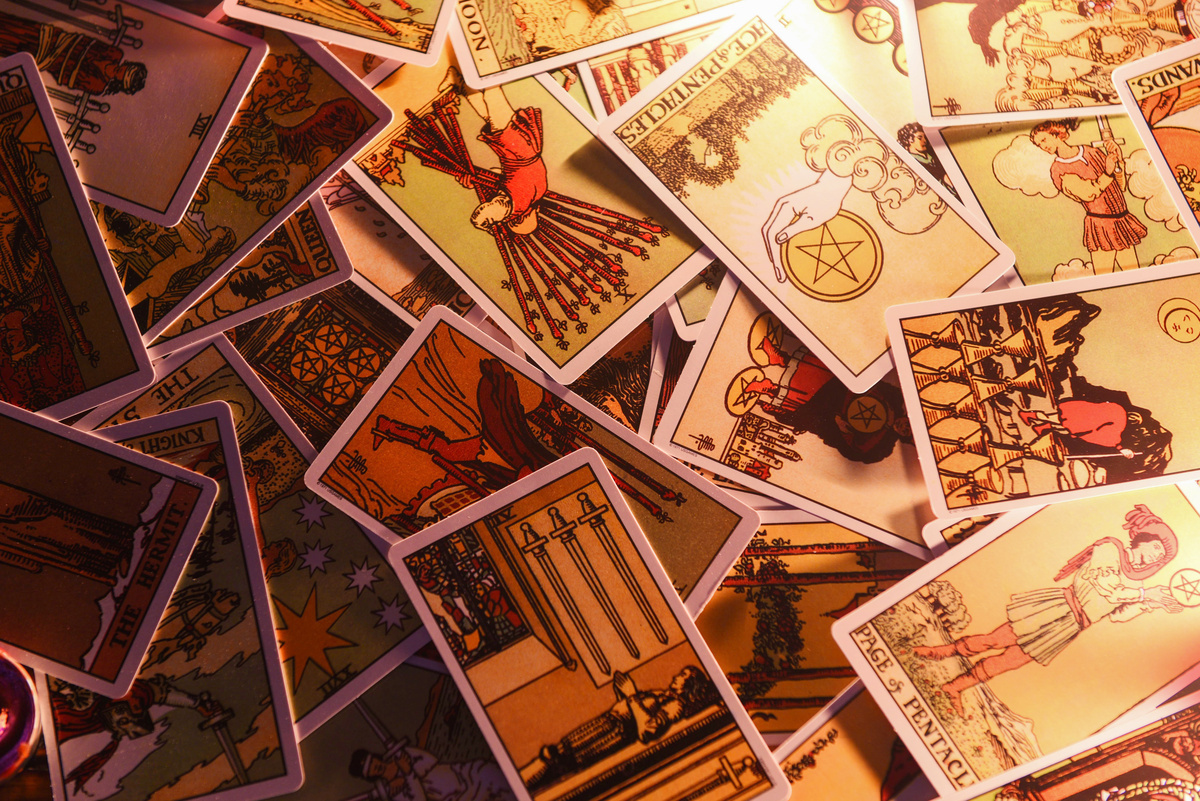
Represented by groups of four distinct suits, showing elements that talk to the consulter in an objective way, the lesser arcanes should not be discarded or undervalued, because used in the correct way they can make the reading more and more complete. Learn the meaning of the lesser arcanes here!
What are the Minor Arcana of the Tarot?
After the famous major arcana, are the minor arcana, numbered 22 to 78, are the largest portion of cards within the Tarot. Can be used to answer questions that require a more objective answer, or that are related to issues of day-to-day life.
The cards are divided into four groups: the suit of hearts refers to emotional issues, the suit of swords refers to the mental field, the suit of diamonds to material issues and the suit of clubs is placed between the inner and outer worlds.
What are the Minor Arcana of the Tarot?
The Minor Arcana in Tarot are the 56 cards following the 22 Major Arcana. The Minor are divided into groups of 14 cards, each of these being represented by a different suit. The suits have correspondence with the elements of nature and carry their meanings, being: fire - clubs, earth - diamonds, hearts - water and swords - air.
The 4 different suits are composed of cards called: kings, queens or ladies, knights and jacks or valets. These 4 representations symbolize court characters and have individual meanings, and it is also necessary to take into consideration when reading the suit belonging to the card in question.
Minor arcana of the suit of hearts
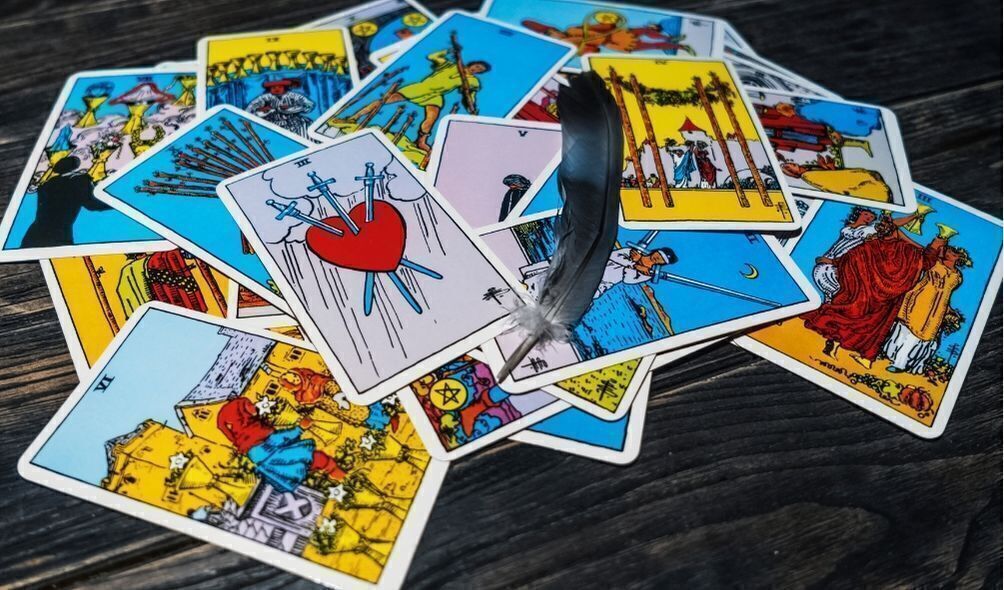
The suit of hearts present in the minor arcana of the Tarot is commonly represented by the cup or the heart symbol, being directly linked to the expression of emotions and emotional issues. Understand the symbolism of the minor arcana of suits of hearts below:
Meaning
The suit of hearts of the Minor Arcana signify different answers in questions related to emotions. Even if the question does not speak directly about this aspect, the cards which have this suit are an answer which addresses the emotional bias.
For example: a person is worried about his career, and receives an answer with the card of hearts, possibly has emotional issues interfering with the professional sphere.
The reading of the arcana which carry the suit of hearts must take into account the ephemeral world of dreams and desires, not committing to the concrete world. Cards of this suit also express emotions and subjective aspects of situations. To understand whether it has a positive or negative aspect, it is necessary to observe the number and the figure of the court.
Iconography
The imagery symbolism present in the minor arcana of the suit of hearts always presents some heart or cup, representing the hearts themselves. As for the arts that fill the blades, they are elaborated with figures that are practicing actions or expressing emotions that connect with the meaning of each one.
In Tarot, suits have connections with natural elements. In the case of hearts, the element in question is water, representing the fluidity of emotions and their constant change. For this reason, it is common to find in the figures belonging to this suit the presence of the element of water or some reference which relates to it.
Minor Arcana of the Suit of Clubs
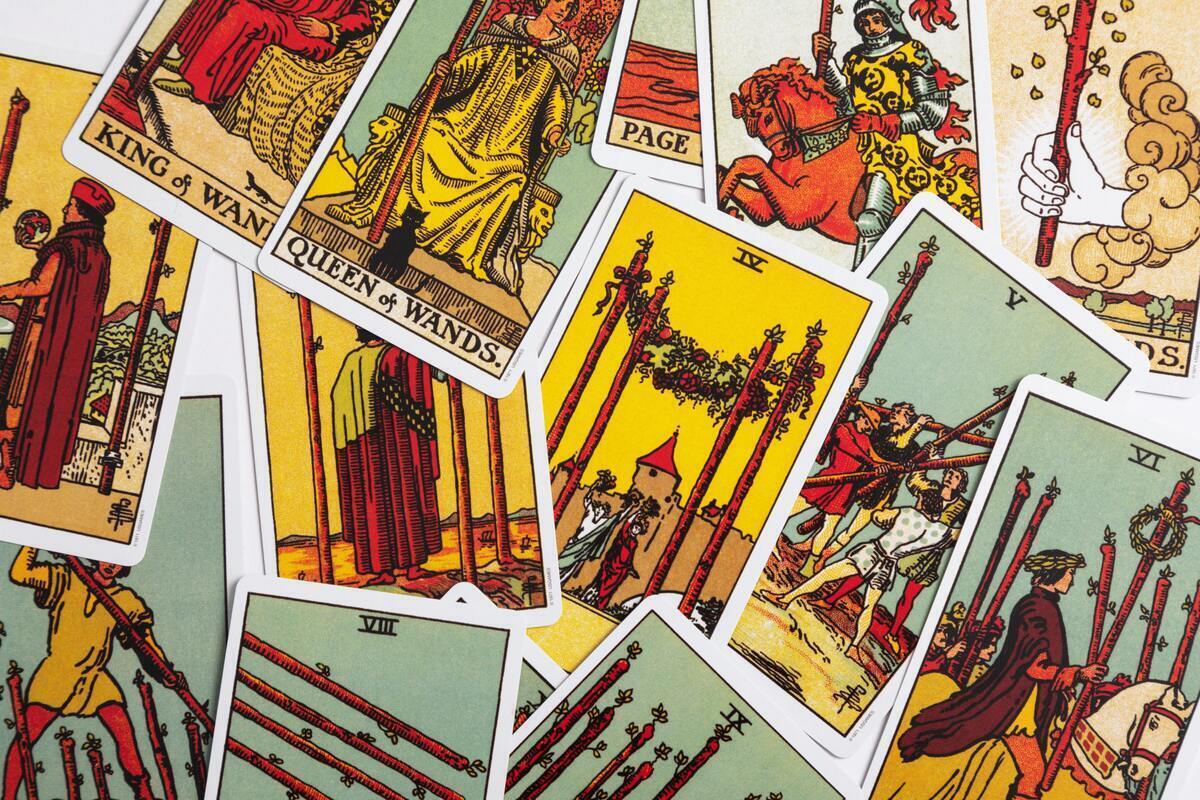
The minor arcana have their individualities, differentiating themselves through the main symbols and their meanings. To better decipher the cards and understand the hidden meaning behind the symbol of clubs in Tarot, read below:
Meaning
Minor arcana of the deck of clubs belong to a group which deals with questions from the perspective of the relationship between the internal and external world. Represented by the verb "to stay", this suit presents reflections on human transcendence. However, it does not necessarily refer to the spiritual world.
In the Tarot, the minor arcana of the suit of clubs are connected to transformative actions that aim to have an impact on the external world, leaving one's own desires and ego in the background. The goal is achieved by the suit of clubs when there is harmony and balance, representing the search for ascension through knowledge of one's own limits.
Iconography
Its symbol can be a stick, a staff or fire, being related to the element fire, which in this sense expresses the purification of the soul, through the search for inner balance and evolution through transcendence. To understand how the message of the card is transmitted it is necessary to analyze which cut or number is present.
Sticks or sticks can also symbolize the concrete tool of material energy ready to be used by man, thus showing the possibility of creation and transmutation. It also expresses the idea of being active mentally and spiritually. Thus the cards of this suit express the need to find power in balance.
Minor Arcana of the suit of Swords
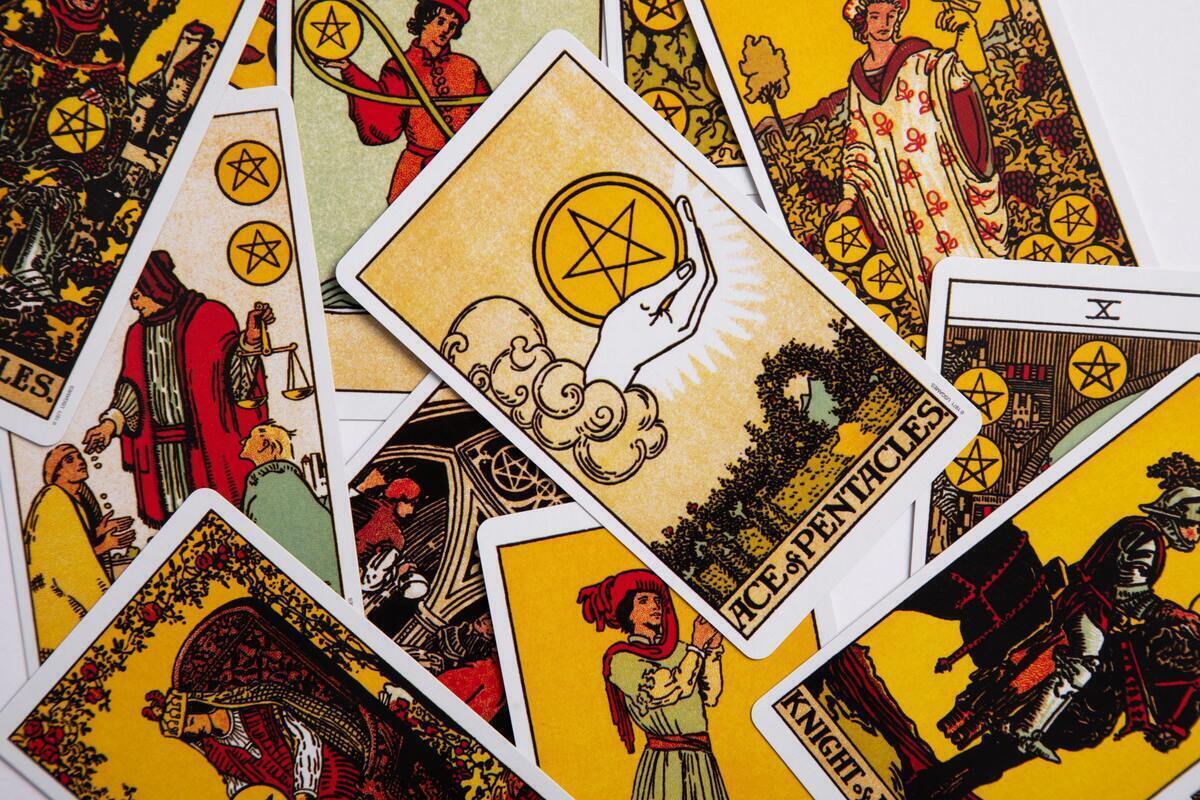
Minor arcana of the suit of Swords present rationality, coldness and the need for reflection to deal with conflicts. Of the suits, Swords is the one that represents the element of nature "air". Unravel the mysteries present in these arcana here!
Meaning
In the Tarot, the cards belonging to the group of minor arcana of the suit of swords express the mental field, the wills and internal reflections. Their presence in a drawing can also indicate the need for battles to be fought.
However, it does not necessarily have a negative omen, it can also indicate that the symbolic weapons to face conflicts are already in your hands.
Being related to the natural element "air", the suit of swords also shows issues related to the world of ideas, thoughts and actions based on reasoning and personal beliefs. In a draw on the emotional field it can indicate lack of compassion and excess of rationality. In the material it expresses great determination.
Iconography
The symbols present on the blades belonging to the suit of swords can be either literal swords, or a black heart, the air, a spear, an axe or a sylph (air elemental). This iconography transmits the two aspects present on the cards: battles or mental power. For this reason, it is also important to take into consideration the numbers present on them.
Swords, the most commonly found symbol in Tarot cards of this suit, express exactly one symbolic tool arranged in one direction. Whether this weapon in question will be used to win aggrandising battles or serve as an instrument of conflict, only analysis of the other aspects will tell.
Minor arcana of the suit of diamonds
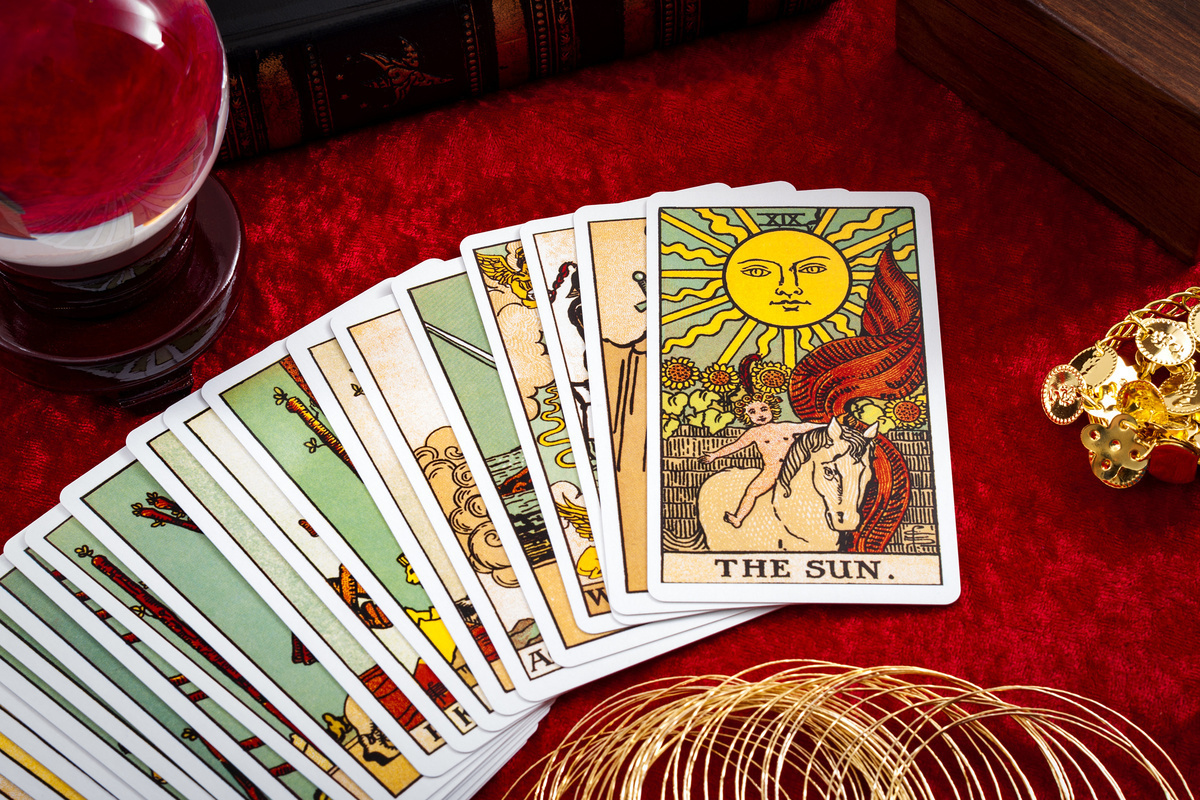
It is common to consult the Tarot to seek answers about material aspects of life, which can often destabilise people. The minor arcana of the suit of diamonds present reflections connected exactly to this theme and can be read literally or subjectively. Find out more about the suit of diamonds.
Meaning
The cards belonging to the group of minor arcana of the suit of diamonds are expression of material concepts, whether related to finances or just symbolizing the concept of something tangible. They can also contain auspicious omen when the issue involves the need to have something or achieve some achievement.
The arcana of the Tarot which carry the suit of diamonds are related to the earth element and have their characteristics, being: materiality, the desire to have and to conquer. For the arcana of diamonds, depending on the number or the figure of the court, ethereal aspects are not taken into account, only what is tangible and palpable.
Iconography
The arcanes of diamonds belong to the group that is related to the element earth, so its iconography can present the earth itself, the bull (sign linked to the element and representative of fecundity), the diamond, coins, pentagrams or the diamond. However, to fully understand the design of the blades.
The figures present in the cards show actions linked to its meaning, and may symbolize from greed to abundance. The numbers from 1 to 10 and the characters of the court also add new information to the symbolism of each arcane. So it is important to study thoroughly each one for a more concrete interpretation.
Can anyone play Tarot?
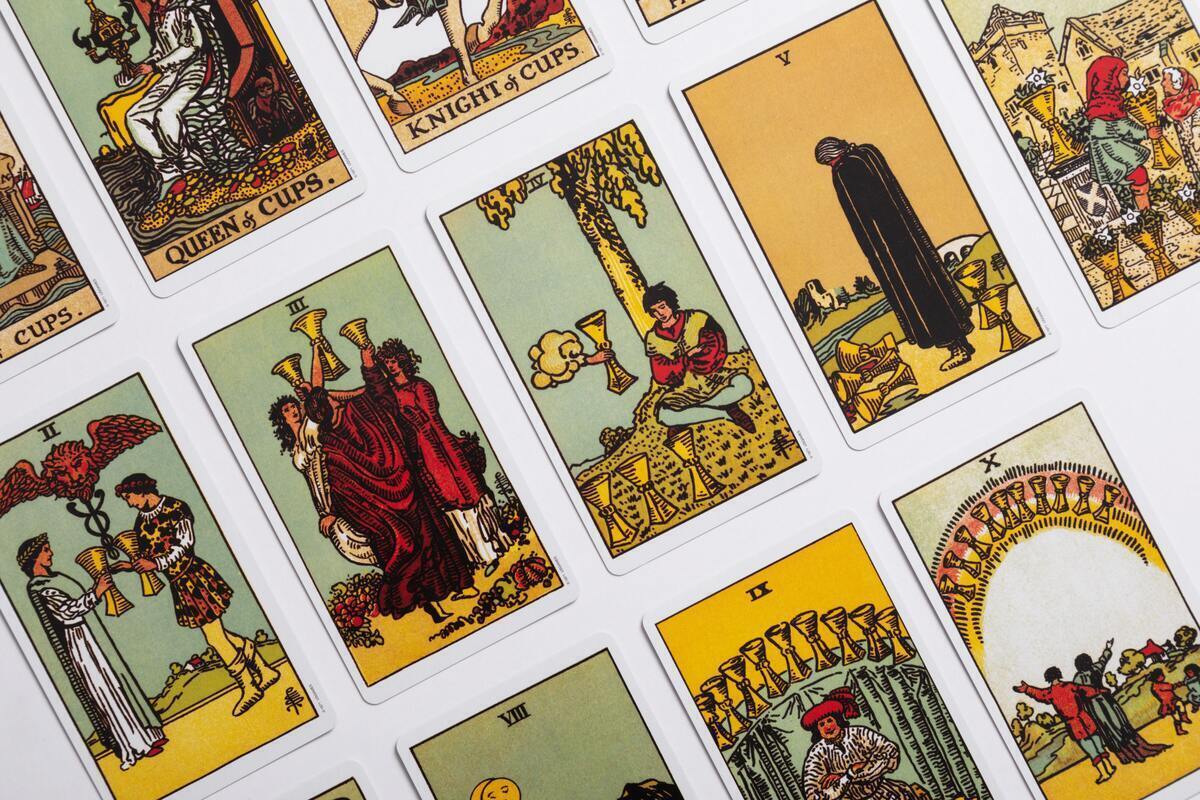
After discovering the universe behind the Tarot cards, it is normal that interest in the practice is born. Unlike the myths created about the Oracles, the reality is that it is not necessary to possess any gift to use the tools of the Tarot, just have a lot of disposition for the study. Therefore, everyone can begin the journey of self-knowledge through the Tarot.
Now that you understand how tarot works, be sure to check out the top 10 best tarot decks of 2022 to purchase the ideal deck so you can get your life read!

